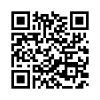EFEKTIVITAS MEDIA PERMAINAN SIMULASI DAN MEDIA GAMBAR PERISTIWA TERHADAP PRESTASI BELAJAR MATERI TEKS DISKUSI
Downloads
Abstract
(Title: The Effectiveness of Simulation Game Media and Event Pictures Media in Improving Learning Achievement in Discussion Text). This study aims to determine the issues concerning whether there is any significant difference among the students achievement in discussion text of bahasa Indonesia tested using simulation game media, event picture media, and other conventional media and whether there are any significant differences among the effectiveness of simulation game media, event picture media, and other conventional media in improving the achievement in discussion text of bahasa Indonesia for junior high school students in West Lombok. The data were collected through a multiple choice test abd analyzed by using ANOVA and Scheffe test using SPSS. The results of these study are: First, there are significant differences among the students achievement in discussion text of bahasa Indonesia tested using simulation game media, event picture media, and other conventional media, with F = 23,717 and p < 0,05. Second, there are any significant differences among the effectiveness of simulation game media, event picture media, and other conventional media in improving the achievement in discussion text of bahasa Indonesia for junior high school students with conclusion; (1) the use of simulation game media is more effective than the use conventional media, with with a mean difference 15,166 and sig < 0,05; (2) the use of event picture media is more effective than the use conventional media, with a mean difference 22,386 and sig < 0,05; (3) the use of simulation game media is less effective than the use of event picture media, with a mean difference -7.220 and sig > 0,05.
Keywords: simulation game media, event pictures media, discussion text.
Downloads
Asyhar, R. (2011). Kreatif Mengembangkan Media Pembelajaran. Jakarta: Gaung Persada Press.
Arsyad, A. (2002). Media Pengajaran. Jakarta: Raja Grafindo Persada.
Basuki dan Farida. (2001). Media Pembelajaran. Bandung: Rosdakarya.
Heinich, R. et al. (1996). Instructional Media and Technologies for Learning (5th ed.) Englewood cliffs, New Jersey: A. Simon & Schuster Company.
Kindsvatter, R. et.al. (1996). Dynamics of Effective Teaching. Third edition. New York: Longman Publisher.
Ullah, M.I. et al. (2013). Factors Influencing Students Motivation to Learning Bahauddin Zakariya University, Multan (Pakistan). International Journal of Human Resource Studies. 3 (2), 90-108.
Sudjana, N. (1989). Dasar-dasar Proses Belajar Mengajar. Bandung: Sinar Baru Algensindo.
Sudjana, N dan Ahmad R. (2010). Media Pengajaran (Penggunaan dan Pembuatannya). Bandung: Sinar Baru Algensindo Offset.
Hamalik, O. (1989). Media Pendidikan. Bandung: Alumni.
Soeparno. (1980). Media Pengajaran Bahasa. Yogyakarta: Institut Keguruan dan Ilmu Pendidikan Yogyakarta.
Massey, S. R. (2015). The Multidimensionality of Children's Picture Books for Upper Grades. English Journal. 105 (5), 45-58.
The authors who publish this journal agree to the following requirements. The author retains the copyright regarding the work being simultaneously licensed below Creative Commons Attribution ShareAlike License.

Jurnal Diksi by Faculty of Languages, Arts, and Culture, Universitas Negeri Yogyakarta is licensed under a Creative Commons Attribution-ShareAlike 4.0 International License.
Based on a work at http://journal.uny.ac.id/index.php/diksi




















